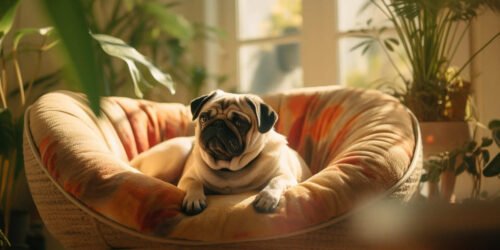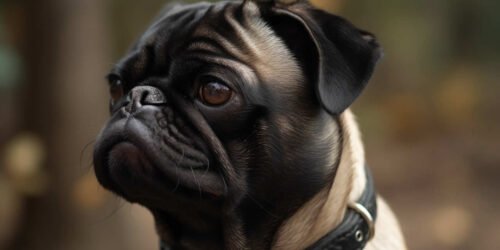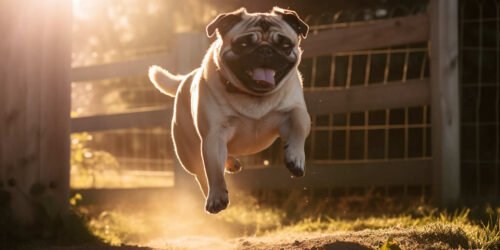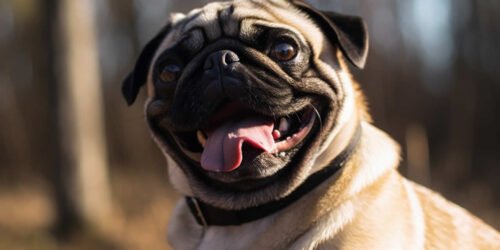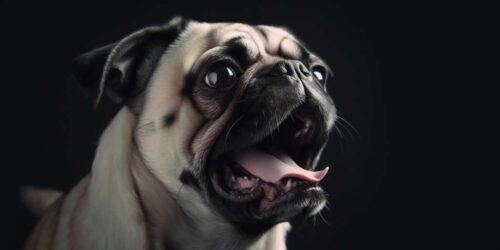Are Pugs Hard To Potty Train?
Introduction
Pugs are known for their adorable faces and affectionate personalities, capturing the hearts of many dog lovers. But when it comes to potty training, these cute canines can be quite a challenge due to their inherent stubbornness and short attention span. This blog post delves into whether pugs are hard to potty train, discussing common challenges faced by pet parents and providing helpful tips on how to successfully house-train your lovable little companion.
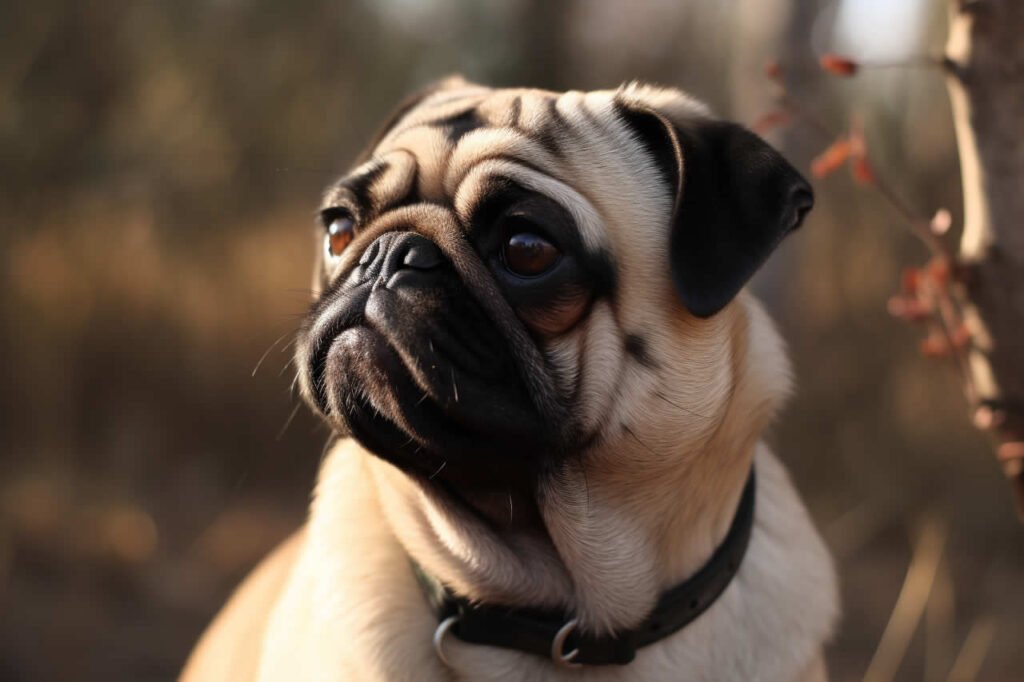
Table of Contents
- Introduction
- Understanding Pug Behavior And Temperament
- Common Challenges In Potty Training Pugs
- Tips For Successfully Potty Training Pugs
- Mistakes To Avoid In Potty Training Pugs
- Conclusion: Potty Training Pugs Takes Time And Patience, But Is Achievable
Key Takeaways
- Pugs can be challenging to potty train due to their stubbornness and short attention span, but positive reinforcement techniques, consistent routines, and crate training can help.
- Common challenges in potty training include indoor accidents, marking behaviour, separation anxiety, and age-related issues.
- Understanding a pug’s behaviour and temperament is crucial for successful house – training. Pugs are social dogs that crave attention and praise from their owners.
- To address accidents during the process of potty training your furry friend requires patience, consistency in approach over time with love rather than punishment.
Understanding Pug Behavior And Temperament
Pugs are known for their stubbornness and independence, which can sometimes make potty training a challenge, but they are also social and affectionate dogs who respond well to positive reinforcement.
Stubbornness And Independence
Pugs are known for their adorable faces and quirky personalities, but many people don’t realise that these little dogs also have a stubborn streak that can make training, particularly potty training, more of a challenge.
For example, you might find your pug understands the concept of going outside to do their business but still occasionally chooses to relieve themselves indoors. This isn’t due to a lack of understanding or even laziness on their part; it’s simply their natural independence shining through.
Social And Affectionate Nature
One of the most endearing qualities pugs possess is their social and affectionate nature. These little dogs form strong bonds with their family members, making them fantastic companions for people of all ages.
Their love for attention and close contact means that pugs genuinely enjoy spending time with you, whether it’s snuggling on the couch or playing in the backyard. This social aspect can actually play an important role when it comes to potty training your pug.
Since they crave interaction and praise from their humans, using positive reinforcement during the training process will have a significant impact on their progress.
Common Challenges In Potty Training Pugs
Pugs may struggle with indoor accidents, marking behaviour, separation anxiety and age-related challenges during potty training.
Indoor Accidents
One of the most common challenges in potty training pugs is indoor accidents. Due to their small size and short attention span, these adorable dogs might struggle with recognizing the appropriate place to relieve themselves.
Furthermore, many new pet owners often find themselves surprised by their pug’s sneaky nature when it comes to finding unexpected hiding spots for such accidents.
To minimise the occurrence of indoor accidents, be sure to actively supervise your pug during housebreaking sessions. Keep an eye on any possible signs that they need to go outside—the sniffing around, wandering off into corners, or persistent whining are all cues that you should pay attention to.
By staying engaged and responsive throughout their learning process, you’ll help them develop good habits while maintaining control over where those bathroom breaks take place in your home environment.
Marking Behaviour
Marking behaviour is one of the common challenges that Pug owners face when potty training their pets. Marking is a behaviour in which a dog releases a small amount of urine, usually to mark territory or as a way of communicating with other dogs.
Indoor marking can be particularly frustrating for owners, and it’s more common in multi-dog households where there might be competition for resources. However, marking can also happen due to stress and anxiety-related issues.
Separation Anxiety
As a pug owner, I know firsthand how challenging it can be to deal with separation anxiety when housebreaking your furry friend. Pugs are known for their social and affectionate nature, which means they can become very attached to their owners.
To overcome this challenge during potty training, it’s important to gradually increase the length of time that your Pug is separated from you. Start by leaving for just a few minutes and gradually work up to longer periods.
You should also make sure that your pup has plenty of toys and treats available while you’re away.
Remember, patience is key when dealing with separation anxiety during potty training.
Age-related Challenges
As with any breed of dog, age can affect the ease or difficulty of potty training a Pug. Young puppies are more likely to have accidents inside the house as they are still developing their bladder control and may not fully understand where it is appropriate to eliminate.
Older adult Pugs, on the other hand, may experience health issues that make it harder for them to hold their bladder for extended periods of time. In addition, older dogs may need more frequent opportunities to go outside in order to avoid accidents indoors.
It’s important to be patient and consistent when potty training a Pug at any age and adapt your routine as needed based on their individual needs and abilities.
Tips For Successfully Potty Training Pugs
Establishing a consistent routine and schedule, using positive reinforcement methods, being patient and consistent with training, immediately addressing accidents, and utilising crate training are effective tips to successfully potty train your pug.
Establishing A Routine And Schedule
Establishing a routine and schedule is essential for successfully potty training your new pug. Here are some tips to help you get started:
- Set a consistent schedule for feeding. Knowing when your pug will need to go can help you anticipate when they need a potty break.
- Take your pup outside at regular intervals, such as every two hours or after meals. This consistent routine will help them understand when it’s time to go outside.
- Use the same door every time you take your pug outside for their potty break. They will learn that this door leads to the outdoors, making it easier for them to signal when they need to go out.
- Choose a designated spot in your yard where you want your pug to go potty, and consistently take them there each time.
- Be patient and consistent with the routine, even on weekends or days off work. Consistency is key in helping your pup develop good habits.
By following these tips, you can establish a successful routine and schedule for potty training your new pug puppy!
Positive Reinforcement
During potty training, it’s important to reward your pug for desired behaviour. Positive reinforcement is a highly effective technique that can encourage your pet to use the designated bathroom area.
This technique involves rewarding good behaviour with treats or praise and ignoring negative actions.
It’s essential to be consistent when applying positive reinforcement during potty training. Your dog will quickly learn which behaviours are rewarded and which are not based on how you respond consistently over time.
Remember that every dog learns differently – some may take longer than others – so patience and consistency is key in reinforcing positive habits, rather than punishing negative ones.
Consistency And Patience
One of the most important things to keep in mind while potty training a pug is consistency and patience. Pugs are notorious for their stubbornness, so it’s essential to establish a routine and stick with it.
Taking them outside at regular intervals throughout the day or after meals will help them learn when they need to go and where they need to do it.
However, accidents are bound to happen, so it’s crucial not to punish your pet if they do have an accident inside. Instead, be patient, consistent, and encouraging when teaching good bathroom habits.
Addressing Accidents Immediately
As much as we try to prevent accidents during the potty training process, they can still happen. It’s important to address accidents immediately and clean them up thoroughly with an enzyme-based cleaner designed for pet messes.
Additionally, it’s important not to punish your pug for having an accident. This will only confuse them and make them fearful of going potty in front of you. Instead, redirect their attention outside and provide plenty of positive reinforcement when they do go in the appropriate spot.
Crate Training
Crate training is an essential part of potty training a new Pug puppy. It involves using a crate or enclosed space to keep the puppy in when unsupervised, providing them with a safe and secure place where they can relax and sleep.
This helps prevent accidents around the house while also teaching the puppy bladder control.
When crate training, it’s crucial to choose an appropriate size that provides enough room for your Pug to stand up, turn around comfortably, and lay down without feeling constrained.
You’ll want to ensure that you make their “den” area comfy by placing either soft blankets or towels on the bottom of their enclosure (pugs love being cosy). Gradually increase time spent in the crate until they can stay inside overnight without any accidents before moving into other areas of your home during playtime.
Mistakes To Avoid In Potty Training Pugs
Avoid punishing your pug for accidents, not providing enough opportunities to go outside, using inconsistent training methods, and giving in to begging.
Punishing Accidents
When it comes to potty training, accidents are bound to happen. However, punishing your pug for those accidents can actually hinder their progress. Instead of scolding or hitting your pup, try redirecting them towards the correct behaviour and rewarding them when they do go outside.
It’s important to remember that potty training takes time and consistency, especially with stubborn breeds like pugs. Punishing your pet for accidents can create confusion and anxiety which will only prolong the process.
Instead, be patient and persistent in your training methods while also keeping an eye on medical issues that may cause indoor accidents such as urinary tract infections or gastrointestinal problems.
Not Providing Enough Opportunities To Go Outside
As a pug owner, it’s important to remember that potty training takes time and more importantly consistency. One mistake some owners make is not providing enough opportunities for their pug to go outside.
Pugs have small bladders and cannot hold their pee for an extended period of time.
If you’re unable to take your pug outside regularly, consider using pee pads as an alternative. However, keep in mind that this can slow down the process of housebreaking your pup since they may struggle with learning the difference between inside and outside spaces.
Inconsistent Training Methods
Consistency is key when it comes to potty training a Pug. Inconsistent training methods can lead to confusion and frustration for your furry friend. It’s important to establish a routine that works for both you and your Pug, and stick to it as much as possible.
This means taking them out at the same times every day, using the same commands and rewards, and creating a predictable environment.
In my experience, I found that being consistent with positive reinforcement was most effective in potty training my Pug. By rewarding him every time he went outside, he quickly learned what behaviour was expected of him.
If you’re struggling with inconsistent training methods, consider seeking advice from a professional dog trainer or researching proven techniques online.
Giving In To Begging
It’s important to avoid giving in to your pug’s begging behaviour during the potty training process. Pugs are known for their affectionate personalities, and they may try to use this trait to get what they want – including a trip outside when they don’t actually need it.
Instead of giving in to begging, stick with your established routine for taking your pug outside. This will help reinforce the idea that there is a specific time and place for going potty.
If your pup does beg, gently redirect their attention with a favourite toy or treat until it’s time for their scheduled bathroom break.
Conclusion: Potty Training Pugs Takes Time And Patience, But Is Achievable
In conclusion, potty training a pug can be a challenging process that requires patience and consistency. While their intelligence can sometimes make them stubborn, with the right tools and techniques, success is achievable.
Understanding their behaviour and temperament is important in establishing a routine and positive reinforcement during the training process. Avoiding common mistakes such as punishing accidents or inconsistent training methods will also aid in successful house-training.
FAQs:
1. Are pugs generally difficult to train when it comes to potty training?
Yes, pugs can be more challenging to train than other dog breeds due to their stubborn nature and tendency towards distraction during training sessions.
2. What are some tips for successful potty training of a pug?
Patience is key in the process of potty training a pug. Consistency in routine, including taking them out at the same times each day and limiting access to high-risk areas like carpeted rooms, can also help speed up the learning process.
3. How long does it typically take to fully housebreak a Pug?
It varies depending on different components such as age, temperament, previous experiences with crate or house-training, time commitment from owners/trainer and consistency throughout process etc., however most dogs usually learn how to avoid accidents within 6 months if they receive consistent reinforcement & support along the way.
4. Should I consider hiring professional trainers for my Pug’s toilet habits?
If you find that your efforts are not producing results after several weeks or months , then a personal trainer specialised in pet behaviour modification may offer helpful advice given their expertise specifically related to correcting unwanted behaviours like toileting inside. They could also provide valuable insight into specific & proven techniques – making sure corrections made reinforce desired outcomes over time, so future incidents are less likely to occur.

